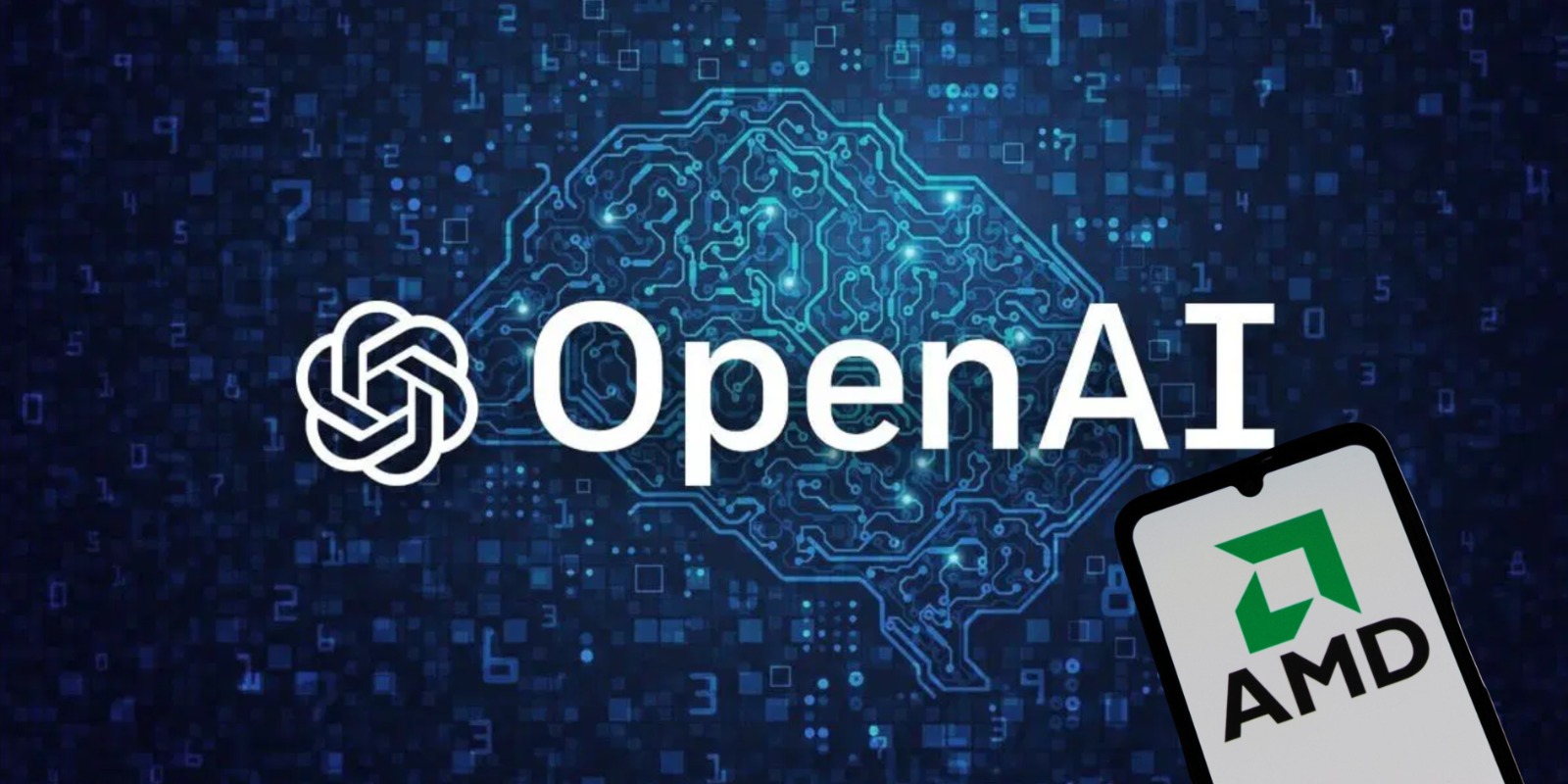Table of Contents
If AI is like a car, the computing chips (GPUs) are the engine. And in the race for AI supremacy, demand for powerful engines is soaring. Recently, OpenAI and AMD (Advanced Micro Devices) announced a multibillion-dollar partnership to supply AMD’s chips for OpenAI’s AI infrastructure. This development could shift how AI is built, who dominates the industry, and how fast new AI innovations appear. Let’s dig into what this deal is all about, what new changes it brings, and why many are calling it a challenge to Nvidia’s dominance.
1. What’s the Deal?
Here are the key details of the partnership:
- Supply of chips: Over the coming years, OpenAI will purchase 6 gigawatts worth of AMD GPUs to power its AI systems.
- First deployment: The first batch starts with 1 gigawatt of AMD’s MI450 GPU series in the latter half of 2026.
- Warrants/equity option: OpenAI has been given a warrant to acquire up to 160 million AMD shares (which is about 10% ownership) based on certain milestones, such as chip deployment and stock price targets.
- Deep collaboration: OpenAI is also a design partner for AMD’s MI450 series, meaning they’ve worked together on how these chips should be built to best serve AI workloads.
- Revenue expectations: AMD expects the deal to bring tens of billions of dollars over time in revenue and to strengthen its AI business.
This deal is not just about buying hardware—it’s about aligning incentives and making both companies win if AI scales up.
2. What’s New / What This Enables
Because of this partnership, new capabilities and shifts are likely:
a. Diversified AI hardware ecosystem
OpenAI has leaned heavily on Nvidia for GPUs in the past. With AMD coming in at scale, AI infrastructure becomes less dependent on a single provider.
b. Optimized chips for AI workloads
As a design partner, OpenAI helped shape MI450 so that these GPUs are well-suited for inference (the “thinking” part of AI) in addition to other AI tasks.
c. Bigger scale, faster AI responses
Six gigawatts of GPU power is massive. This gives OpenAI the infrastructure to handle more users, more models, and more complex tasks.
Even the first gigawatt alone allows for faster performance.
d. Shared success & incentive structure
The warrant deal means OpenAI benefits if AMD’s stock does well and the chip deployments succeed. It aligns both parties’ futures.
e. Reduced cost & more competition
If AMD can compete with Nvidia on price or efficiency, it may lower barriers for AI companies. More players pushing competition could drive down costs.
3. Why This Matters for AI & Technology
Here’s why many in tech are watching this:
- Challenge to Nvidia’s dominance: For a long time, Nvidia has been the go-to provider for AI compute. This deal signals AMD is stepping up to challenge that.
- Better resilience & supply: When one supplier dominates, shortages or disruptions become big risks. Diversifying ensures AI doesn’t get bottlenecked by hardware supply.
- Faster innovation: With more compute power available, AI research and deployment can move quicker.
- Wider adoption of AI: More affordable and powerful hardware means smaller AI teams or companies may be able to build bigger models or deploy them more widely.
- Strategic partnerships & alignment: AI isn’t just software; it becomes tightly tied to hardware, finance, and infrastructure decisions.
4. Challenges & Risks
Even with its promise, this partnership faces hurdles:
- Execution risk: Delivering gigawatts of GPUs and making them all work at scale is a massive task. Delays or integration problems could hurt.
- Cost & financing: This is an expensive deal. OpenAI has to invest heavily in data centers, power, and infrastructure.
- Competition response: Nvidia and others will fight back with better chips, price cuts, or new innovations.
- Technology risk: Chip design is complex. If future models or architectures change rapidly, some hardware might become obsolete.
- Milestone dependency: OpenAI’s purchase rights to AMD shares rely on hitting milestones. If those don’t occur, the warrant benefits may not fully materialize.
5. What Could Come Next
Some possibilities to watch:
- OpenAI may start deploying MI450 GPUs in its servers in late 2026.
- As deployment scales, AMD and OpenAI might co-develop further next-gen chips tuned for future AI models.
- The AI hardware market could fragment more, with multiple chip types optimized for different tasks (training, inference, edge, etc.).
- Other AI companies may make similar deals with AMD or rival chipmakers to avoid relying only on Nvidia.
- This could spur innovation in software/hardware co-design—building models that are optimized for certain chip features.
Conclusion
The OpenAI–AMD deal is a bold move in the AI arms race. By committing to massive chip purchases, working closely in design, and aligning financial incentives, this partnership is reshaping how AI infrastructure is built. It doesn’t replace Nvidia yet—but it challenges the status quo and opens the door to more competition, innovation, and flexibility in AI hardware.
If you follow AI, chip tech, or computing infrastructure, this is a story to keep close. The engines behind AI are changing—and that may power the next wave of breakthroughs.
